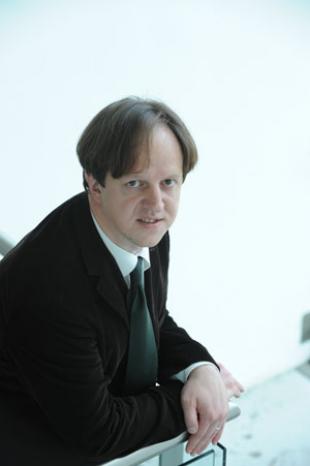Post date:
Professor Harald Haas has been featured in the first edition of CNN's Make Create Innovate Programme:
If you are unable to view the video on the CNN website, the dialogue from the programme with Harald has been included below:
27 September 2012
CNN International: Quest Means Business
CNNQMB
English
Copyright 2012 CQ Transcriptions, Inc. All rights reserved. Prepared by CQ Transcriptions.
QUEST: -- and the strange and wonderful workings of everyday items. The things that we use in our everyday life. But we are going to show you how they started, with a simple -- maybe complex -- bright idea.
Now, with more than 700 million people using wifi worldwide, radio bandwidth, you'll know, is getting crowded. So, a professor in Edinburgh has looked to the light for a solution. Nick Glass with Make, Create, Innovate.
(BEGIN VIDEOTAPE)
NICK GLASS, CNN INTERNATIONAL CORRESPONDENT: Someone once said, "Let there be light." Is this how we will access the internet in the future? At the speed of light?
GLASS (voice-over): German-born professor Harald Haas has patented an illuminating answer to the problem of congested bandwidth.
HARALD HAAS, PROFESSOR, EDINBURGH UNIVERSITY: My big idea is to turn light bulbs into broadband communication devices.
GLASS: You've heard of wifi. Here in this Edinburgh laboratory, the future is li-fi.
HAAS: The demand for wireless connectivity is increasing tremendously. So, we've just taken the view of moving from the radio spectrum into the visible light spectrum, which is 10,000 times larger than the radio frequency spectrum.
We are not running in competition to wifi. We still need wifi. What I'm saying is, use the existing lighting infrastructure, cooperating with the radio frequency domain, and that's why I don't see that this is a -- in confrontation to the current industry.
GLASS: And LED is not just a light source, it's a sophisticated electronic device. Crucially, it can be made to oscillate at phenomenal speeds millions of times per second. We can't see it, but it's this capability which allows it to transmit data.
HAAS: Take the light bulb, and we have a binary stream that fits -- that represents an image, for example. Then, there is a one. We turn on the light bulb. And then there is a zero, we turn it off. And the receiver at the other end would recognize these changes of intensity and would then decode that binary stream and stack it in an image.
GLASS: Interrupt any single beam, and the data stream is disrupted.
Well, I've seen li-fi working in a lab, but what about in the real world? We head up the hill to Edinburgh castle for a wee experiment. And then, we descend down to the dungeons, hundreds of feet underground, to the deepest, dankest part of this ancient royal fortress. Without even so much as a cell signal down here, we can still communicate. Even send a large video file.
HAAS: So, what we have here is a little server here in that cabinet. It streams high-definition video to that LED lamp, which is an ordinary LED light bulb you can buy off the shelf.
What we have here is a little hole and here's a receiver. The receiver picks up the signals that come from that light. Let me just interrupt that light beam. Block the receiver, and then the video and the sound would stop. If I would release it again --
GLASS (on camera): It starts.
HAAS: It starts again. The light carries the video, so I can touch the video now. I have the video in my hand, if you want. And now, the video is back on the screen.
GLASS (voice-over): After eight years in development, Professor Haas first demonstrated li-fi to an audience in 2011.
HAAS: I saw into the eyes of the many people, the utter surprise, disbelief. This was a moment of internal joy.
GLASS (on camera): If I come back in 10 years, where will this technology have gone?
HAAS: Imagine where you have light sources in shopping windows, traffic lights, street lights, in airplanes, in trains, at home, under water. Everywhere where you have light, you have a means of communicating.
GLASS: A prototype light bulb is only about six months away, and if it's anything like wifi, li-fi could turn out to be a very lucrative part of our smarter future.
HAAS: A lot of attention, a lot of interest, to shape a technology that could change the way we communicate in 10 years from now. And it's in our hands to turn that into future success.
Content and programming copyright 2012 Cable News Network, Inc. ALL RIGHTS RESERVED. Copyright 2012 CQ-Roll Call, Inc. All materials herein are protected by United States copyright law and may not be reproduced, distributed, transmitted, displayed, published or broadcast without the prior written permission of CQ-Roll Call. You may not alter or remove any trademark, copyright or other notice from copies of the content.
CQ Transcriptions, LLC
Document CNNQMB0020120928e89r00001



